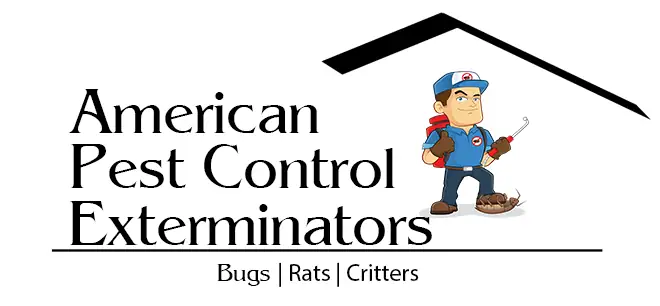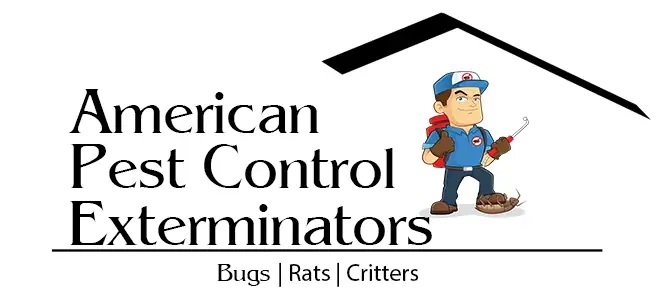
How To Safely Remove Wasp Nests From Your Home In 6 Steps
Wasps are an unwelcome guest in any home. Not only can the sight of them be intimidating, but their sting can also cause great pain and even allergic reactions for those who come into contact with them. If you find yourself faced with a wasp infestation in your home, then it’s important to know how to safely remove wasp nests from your property. In this article, we will provide you with 6 simple steps for removing wasp nests from your home and preventing further infestations. We’ll also go over what you need to do if you or someone in your household is stung by a wasp, as well as give tips on how to discourage wasps from entering your home again.
Step One: Identify the Wasp Species
If you have wasps in and around your home, chances are you would like to get rid of them as soon as possible. But before you can remove the wasp nest, you need to identify the species of wasp that is causing the problem. This is important because different species of wasps require different removal methods.
There are many different species of wasps, but the three most common types in North America are paper wasps, yellow jackets, and hornets. Paper wasps are relatively small and have long legs. They build their nests out of paper-like material and are often found near windows or in attics. Yellow jackets are larger than paper wasps and have a more rounded body. They build their nests underground and are commonly found in yards or gardens. Hornets are the largest type of wasp and have a large head with prominent eyes. Their nests are usually built high up off the ground, such as in trees or on rooftops.
If you’re not sure which type of wasp you’re dealing with, take a look at some pictures online or ask an expert for help. Once you’ve identified the species, you can move on to step two: choosing the right removal method.
Step Two: Time Your Attack
When you have located the wasp nest, it’s time to take action. But before you do, it’s important to time your attack.
Wasp nests are most active during the day, so the best time to remove them is at night when the wasps are less active. However, this does not mean that you can’t remove a wasp nest during the day. If you must remove a wasp nest during the day, be sure to wear protective clothing and have a can of insecticide ready.
The best time of year to remove a wasp nest is in late summer or early fall when the population of wasps is at its peak. This is because the queen will have stopped laying eggs and the number of wasps will begin to decline.
Step Three: Dress for Success
Dressing for success when removing wasp nests from your home is important for both your safety and the success of the removal process. Wearing the proper clothing will help to protect you from stings and keep you safe from other potential hazards.
When removing a wasp nest, it is important to wear long sleeves and pants to cover as much of your skin as possible. A hat or other head covering can also be helpful to keep wasps from getting into your hair. In addition, it is important to wear gloves when handling the nest or any chemicals that may be used in the removal process.
If you are using chemical pesticides to remove a wasp nest, it is also important to wear protective clothing, including a respirator, to avoid inhaling any harmful fumes.
Step Four: Make a Drowning Pool
If you find a wasp nest on your property, it’s important to take action to remove it as soon as possible. A wasp nest can be a serious hazard, particularly if it’s located near your home or another structure where people are present.
There are a number of ways to remove a wasp nest, but one of the most effective is to simply drown it. This can be done by pouring a large container of water over the nest and allowing it to sit for at least 24 hours. The water will kill the wasps and their larvae, and the Nest will eventually collapse.
It’s important to be very careful when approaching a wasp nest, as Wasps can become aggressive when disturbed. If you’re not comfortable handling the situation yourself, you may want to hire a professional pest control company to take care of it for you.
Step Five: Smother Their Home
The final step in safely removing wasp nests from your home is to smother their home. This can be done with a variety of materials, but the most effective method is to use a dust or aerosol insecticide. Apply the insecticide liberally to the nest entrance and any cracks or crevices leading into the nest. Once the insecticide has been applied, seal off the opening with tape or another material to prevent the wasps from escaping. Allow the insecticide to work for at least 24 hours before removal.
Step Six: Remove the Nest
If you have a wasp nest on your property, it’s important to remove it as soon as possible. Wasps can be aggressive and their stings can be painful. They can also cause serious health problems if someone is allergic to their venom.
The best way to get rid of a wasp nest is to use a pesticide or an insecticide that is specifically designed for wasps. This should be done with caution, as pesticides can be toxic to humans and other animals. Make sure to follow all safety instructions when using the pesticide.
Once the nest has been treated, it can be removed by simply knocking it down with a broom or shovel. Be sure to wear protective clothing such as gloves and long-sleeved shirts when doing this. If any wasps remain, they can be safely removed with a jar or container.
Finally, once the nest has been removed, make sure to seal up any cracks or crevices around your home where the wasps may have entered from to prevent them from returning.
How to Prevent Wasp Nests in the Future
Wasp nests can be a real nuisance, and they can be dangerous if you’re allergic to their stings. If you want to prevent wasp nests from forming in your home in the future, there are a few things you can do:
1. Keep your yard clean and free of debris. Wasps like to build their nests in places that are cluttered or have a lot of organic material, so keeping your yard tidy will make it less attractive to them.
2. Trim back trees and shrubs near your house. Wasps like to build their nests in high places, so trimming back any trees or shrubs near your home will make it less likely for them to build a nest there.
3. Use wasp traps. There are numerous commercial wasp traps available that can be placed around your property. These traps attract wasps with a sweet scent and then trap them inside, preventing them from being able to build a nest.
What to Do if You Are Stung by a Wasp
If you are unfortunate enough to get stung by a wasp, there are a few things you can do to ease the pain and swelling. First, wash the area with soap and water. This will help to remove any venom that may be left on your skin. Next, apply a cold compress to the area for 10-15 minutes. This will help to reduce the swelling and pain. If you have any anti-inflammatory medication such as ibuprofen, take it as directed. Finally, if the pain and swelling persist, seek medical attention from your doctor or go to the nearest emergency room.
Why do Wasps Nest in My Home?
Wasps are most likely to nest in your home if they can find an opening to get inside. Wasps will also build their nests in locations that offer them protection from the elements and predators. Once a wasp finds a suitable location for its nest, it will begin to construct the nest by chewing up wood and other materials to create a paper-like material.
If you have wasps nesting in your home, it is important to take steps to remove the nest as soon as possible. Wasps can be aggressive, and their stings can be painful. In some cases, people can have allergic reactions to wasp stings that can be life-threatening.
When to Call a Professional Exterminator
When you have a wasp nest on your property, it is important to take action as soon as possible. If the nest is left alone, the wasps will continue to multiply and could become a nuisance or even pose a safety hazard.
If you see a wasp nest on your property, call a professional exterminator right away. Exterminators have the experience and equipment to safely and effectively remove wasp nests. They will also be able to provide advice on how to prevent wasps from returning in the future.
Removing wasp nests from your home can be a tricky business, but with the right protective equipment and knowledge it can also be relatively easy. We hope that these 6 steps have been helpful in showing you how to safely remove wasp nests from your home without putting yourself or anyone else at risk of harm. With the right precautions and understanding of what needs to take place, removing a wasp nest should no longer feel like an intimidating task. Good luck!

